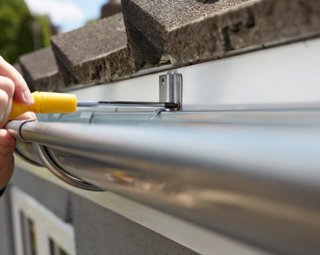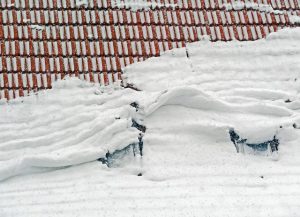Most people like a breeze, some won’t mind some winds, but no one would say yes to storms. Certainly, not roofs. If they could only talk, roofs would have some really threatening stories to narrate. As you know, they stand at the first line of defense. Whether there’s a hail storm, a really strong wind, a hurricane, or a tornado, the roof is at the greatest risk.
Storms do affect roofs
 The marks storms leave behind? They vary in terms of size and extent but there’s likely damage on the shingles. Fierce winds and all sorts of storms may lift, tear off, or curl shingles. Hail may cause significant damage on the roofing system – both the roof material and the rain gutters. And don’t forget that during storms, the volume of flying objects is high. Even if there’s no trees too close to the home, there still a high possibility of impact – a very real reason for serious roof damage.
The marks storms leave behind? They vary in terms of size and extent but there’s likely damage on the shingles. Fierce winds and all sorts of storms may lift, tear off, or curl shingles. Hail may cause significant damage on the roofing system – both the roof material and the rain gutters. And don’t forget that during storms, the volume of flying objects is high. Even if there’s no trees too close to the home, there still a high possibility of impact – a very real reason for serious roof damage.
Now, if you live in a storm-prone area and thus, your roof experiences a quite good share of hardship often, the need for inspections is even higher. But don’t make the mistake to believe that areas, which hardly experience storms, are free of all risks. It takes one storm to wreak havoc on the roof.
What’s the trap in such situations? When you know that your area doesn’t get high winds and storms often, you are likely to install a roof not as durable and resistant as you would in a hurricane-prone area. And so, the chances of dealing with roof problems due to a storm are still high.
Which are the roof risks after a storm?
When storms leave their mark on roofs, the roofing system becomes vulnerable. Even if the damage is limited, the rain water will slowly but steadily find its way in the house. If the gutters and the downspouts are distorted or filled with all kinds of flying debris, there’s also a chance of water overflowing and leaking. As a matter of fact, gutter damage along with stagnant water will make these parts of the roof system quite dangerous since they may not be able to hold the weight for long. As a result, their hangers may break. They may fall. Some sections may break or get separated, still leading to leaks and fascia damage.
Steps to take after a storm
 When the storm is finally gone, you need to be sure the roof is okay. Although storms always affect the roof, the problems may not be serious. It all depends on the roofing material, the age of the roof, the roof installation, if it’s maintained or not – lots of things.
When the storm is finally gone, you need to be sure the roof is okay. Although storms always affect the roof, the problems may not be serious. It all depends on the roofing material, the age of the roof, the roof installation, if it’s maintained or not – lots of things.
Sometimes, the marks of the storm are obvious and you cannot really miss them. That’s when the roof damage is so severe that there’s already an interior water leak. So, here’s a list of things to do when the storm is over.
• Go around the house and make sure there’s no leakage or water stains.
• Make a very thorough visual inspection and not just inside the house but outdoors too. Inside, don’t limit your inspection only to the attic and the first-floor rooms but also check around all entry doors and windows. When you go outside, check the windows too, see if parts of the gutter system are broken or damaged in any way. Do the same with the downspouts. Also, check if there’s lots of flying debris in your yard. The more you see, the higher the possibility the roof is hit and thus, damaged.
• It’s really important that the roof is checked. But don’t climb on it yourself. Better call a roof contractor that would know how to step on the shingles without breaking them and how to recognize problems with the material, the flashing, the gutters – all components. Anyway, if there’s a need for some roof repair, it’s best that the roofer does everything needed then and there.
The best way to minimize the possibility of severe damage is to keep the roof in a good condition. But mind you, storms are often so strong – especially if we are talking about hail storms, that some damage may not be avoided – even if the roof is just fine. The best thing you can do to prevent the consequences of a damaged roofing system? Make sure your roof is checked after big storms. That’s something you don’t want to forget.


